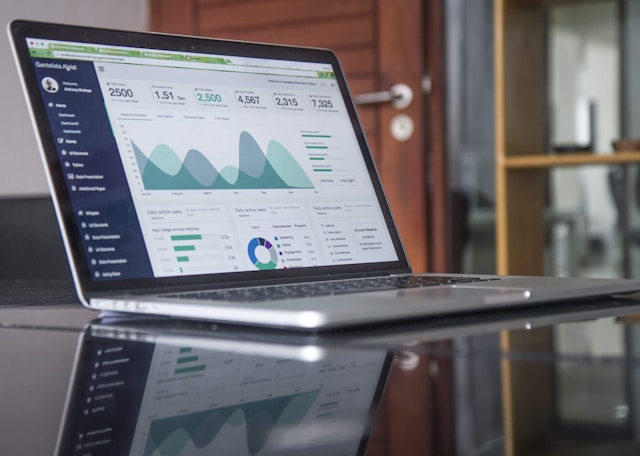Time tracking tools are essential in managing the efficient use of time within a project, providing insights into how resources are allocated and helping to ensure that deadlines are met. When integrated with Project Management (PM) systems, these tools enable seamless data flow between time-tracking and task management features, which can improve productivity, accuracy, and team collaboration. The combination of these tools allows managers to oversee project progress and performance in real-time, while also allowing team members to log their work hours without the need for manual updates.
Integrating time tracking tools with PM systems offers substantial benefits, from automating timesheet entries to providing real-time reporting and analytics. This integration ensures that time spent on various tasks is automatically recorded and linked to specific project components, streamlining processes and reducing administrative overhead. Additionally, it enhances decision-making by providing a clearer picture of how time is spent across different projects and tasks, leading to more effective project management and better resource allocation.
Overview of PM Systems
Project Management (PM) systems are software platforms designed to help teams plan, execute, and monitor the progress of projects efficiently. These systems are crucial for managing tasks, resources, timelines, and collaboration among team members. PM systems typically offer tools for organizing workflows, assigning responsibilities, setting deadlines, and tracking project milestones, making it easier to stay on top of various aspects of a project.
Modern PM systems go beyond basic task management and include features like document sharing, communication channels, and integrations with other tools, such as time tracking and reporting software. Popular PM systems include tools like Asana, Trello, Jira, and Monday.com. These platforms allow teams to manage both simple and complex projects, with customizable features that can be adapted to the unique needs of different industries and team structures. By centralizing project information, PM systems help streamline operations, ensure transparency, and enhance team collaboration, ultimately contributing to more successful project outcomes.
The Role of Time Tracking in Project Management
Time tracking is an essential tool in project management, providing valuable insights into resource utilization, task progress, and overall project efficiency. By carefully monitoring the time spent on various activities, project managers can identify issues, optimize planning, and ensure that the project remains on track. Time tracking not only helps in meeting deadlines but also assists in improving future planning by offering accurate data for forecasting and resource allocation.
Key benefits of time tracking in project management:
- Project Progress Monitoring: Helps project managers track the time spent on tasks and identify any delays or bottlenecks.
- Improved Planning and Forecasting: Provides data on task completion times, which enhances future project estimating and planning.
- Deadline Management: Ensures that projects stay on schedule by accurately tracking time and identifying potential delays early.
- Budget and Resource Allocation: Helps managers stay within budget by tracking resource use and identifying if additional resources are needed.
- Informed Decision-Making: Provides clear data on task contributions and team performance, aiding better decision-making.
- Team Accountability: Promotes a culture of responsibility by allowing both managers and employees to track individual performance and productivity.
- Optimized Resource Utilization: Helps in determining whether resources are being used efficiently or if adjustments are required.
Steps of Integration Time Tracking Tools with PM Systems
Integrating time tracking tools with Project Management (PM) systems involves several key steps to ensure seamless functionality and enhanced project oversight. Below are the essential steps for successful integration:
1. Evaluate the Requirements and Choose Compatible Tools:
The first step is to assess the needs of your project team and select the appropriate time tracking tool and PM system. The tools should be compatible with each other and support the specific features your team needs, such as task management, resource allocation, and reporting. Popular combinations include tools like Toggl with Asana, or Harvest with Trello. Ensure the tools you choose offer integrations or API support for smooth synchronization.
2. Set Up Accounts and Configure Settings:
Once you’ve selected the tools, create accounts for both the time tracking tool and PM system, and configure their settings. Customize both tools to align with your project workflows, such as defining tasks, assigning team members, and setting deadlines in the PM system. In the time tracking tool, ensure that work categories, client details, or project types are aligned with how the projects are structured in the PM system.
3. Integrate the Tools Using Native Integrations or APIs:
Most PM systems and time tracking tools offer native integrations, which make the process easier. Check if your time tracking tool has a built-in integration with your chosen PM system and follow the provided setup instructions. Alternatively, use an API (Application Programming Interface) to connect the two systems. This may require some technical setup, such as entering API keys, defining syncing rules, and ensuring that time logs automatically link to project tasks and milestones.
4. Map Time Tracking Categories to Project Tasks:
To ensure accurate time logging, map categories or labels from the time tracking tool to the corresponding tasks or projects in the PM system. This step ensures that time entries are associated with the correct projects, tasks, or milestones, allowing project managers to track specific activity durations easily. This mapping can be done manually or automatically based on pre-set task and project identifiers.
5. Test and Optimize the Integration:
Before fully rolling out the integration across your team, perform a test to ensure everything works as expected. Verify that time logs are syncing correctly with the PM system, that reports are being generated accurately, and that the integration is not causing any delays or errors. Gather feedback from team members about the ease of use and identify any issues or areas for improvement. Adjust configurations as necessary to ensure smooth operation.
6. Train the Team and Monitor Usage:
After successful integration, train your team on how to use the integrated system effectively. Provide guidance on how to log time, track progress, and review reports. It’s important that everyone understands how the integration works to avoid discrepancies or mistakes. Continuously monitor the system’s performance and make adjustments as needed to improve the workflow, ensure accurate time tracking, and enhance project outcomes.
Conclusion
Integrating time tracking tools with Project Management (PM) systems provides significant advantages for both project managers and team members. This integration streamlines workflows, improves accuracy, and enhances overall project efficiency by automating time logging and connecting it directly to tasks, projects, and milestones. The ability to monitor progress in real-time, track resource allocation, and generate insightful reports fosters better decision-making and ensures projects stay on schedule and within budget. By choosing the right tools, configuring them properly, and training the team, organizations can leverage this integration to optimize productivity, improve transparency, and deliver high-quality results. Ultimately, time tracking integrated with PM systems enhances project management practices, contributing to the success of projects and the growth of the team.









